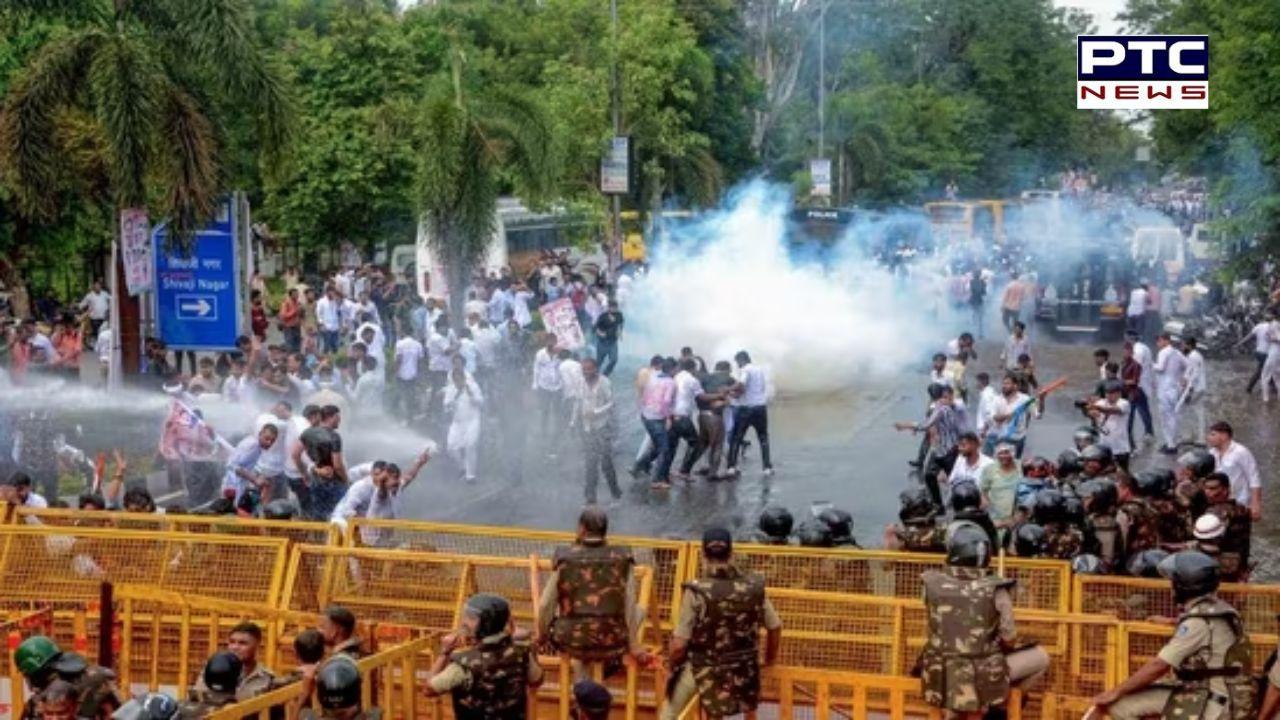NEET Row: Detailed NEET data released, revealing top-performing centers
In response to accusations of cheating, the Supreme Court ordered NTA to reveal comprehensive NEET-UG 2024 exam data. Top ranks are dominated by coaching hubs, with a few exceptions.

PTC News Desk: Amid claims of anomalies and exam-day cheating, an unusual amount of information regarding the NEET scale exam was released on May 5. The NTA was directed by the Supreme Court, which is considering multiple petitions over the purported anomalies, to release the marks that each student received by Saturday noon, along with the centers from which they appeared. However, the identities of the applicants must remain hidden.
In review of the data revealed that although certain centers had a higher-than-average percentage of top achievers, their success rates were generally in line with the city's overall performance.
Additionally, coaching hubs dominated the top rankings, according to HT's analysis: A quarter of the students listed in the top hundred came from six cities: Bengaluru in Karnataka, Delhi, Vijayawada in Andhra Pradesh, Jaipur and Sikar in Rajasthan, and Kottayam in Kerala.
In certain centers, there were specific irregularities. An exceptionally low percentage of candidates in the bottom 50% was observed in 17 centers spread across West Bengal, Gujarat, and Haryana; however, there was no commensurate increase in the number of top performers.
Additionally, unremarkable patterns were shown by previously identified centers, according to the data. The performance of the centers where cheating or other irregularities were previously detected was either on par with or below the average for their city.
It will undoubtedly be challenging to determine or rule out a paper leak that benefits a significant number of candidates statistically if such candidates are sparsely spread throughout centers.
The exam has been the focus of much discussion, with questions raised about the fairness and honesty of a procedure that acts as a doorway to medical school in India. The worries emerged following claims of exaggerated marking and question paper leaks, which have turned into a national political party flashpoint and sparked weeks of protests by thousands of students.
The exam was held at 4,750 locations this year in 571 cities, including 14 overseas. When 67 candidates—some of whom were from the same exam center—achieved perfect scores of 720, the results—which were announced on June 4—first caused controversy. Their results have since been altered by a retest of these applicants and the reversal of a grace-mark judgment.
Requests for comments on the data release and its consequences were not answered by NTA officials.
Comparing a center's success rate (defined as the percentage of candidates who placed in the top 1% of the field) with the city's reveals that there isn't any solid evidence of widespread cheating.
Certain centers do, in fact, have a large percentage of students who scored in the upper percentiles on that metric. For example, Tagore P.G. College in Sikar, Rajasthan; Junior Baselios English Medium School in Kottayam, Kerala; and Danta Mahavidhalaya in Sikar had the greatest percentage of individuals (8%–10%) who placed in the top 1% of all NEET applicants, out of all Indian centers.
These success rates, nonetheless, were just 2.3–5.7 percentage points higher than the total rates in Sikar and Kottayam, two well-known coaching hotspots. The performance of any other center did not deviate from that of their city by more than 5.7 percentage points.
Additionally, an interesting anomaly in 17 centers in West Bengal, Gujarat, and Haryana was found in the data. Less than 35% of candidates in these centers placed in the lowest 50%, which is at least ten percentage points lower than the average for their city. This is an exceptionally low percentage of candidates. Nonetheless, the percentage of top 1% performers in each city stayed quite close to the norm, making it more difficult to make firm judgments regarding any malpractices.
The Coaching Federation of India member Keshav Agarwal voiced concerns about the concentration of top scorers in particular places. "The results have revealed startling data. The majority of the locations are small towns, and surprisingly, Kota is missing. The concentration of high scorers has come from Sikar, Gujarat, and Haryana," he stated. "We have 3,400 students above 600 from Gujarat itself, 4,300 from Sikar, and about 1,200 from Haryana. This represents 11% of all students in India who have scored 600 or higher."
"The outcome is undoubtedly skewed, and this is only one year. If 2023 data is released, there will undoubtedly be a lot of abnormalities, and if comparison with board exam scores is made, then many more aberrations will be observed. The issue goes far beyond paper leaks and is challenging to separate beneficiaries," Agarwal continued.
Additionally, the data demonstrated that centers that had previously been reported for anomalies did not exhibit peculiar performance patterns. For instance, just 0.71% of candidates at Oasis School in Hazaribagh, Jharkhand, finished in the top 1%, which is comparable to Hazaribagh's average rate of 0.66%. The principal of the school was detained in connection with the NEET exam.
Comparably, in Bharatpur, Rajasthan's Master Adityendra Government Senior Secondary School, where a case of impersonation was reported, 0.71% of candidates placed in the top 1%, which is lower than Bharatpur's 1.4% overall average.
The NEET-UG's legality is presently being examined by the Supreme Court only in relation to two distinct cases of paper leaks in Patna and Hazaribagh. The court made it clear that whether or not the violations were systemic or localized will determine whether or not to order a retest and maybe scrap the exam.
